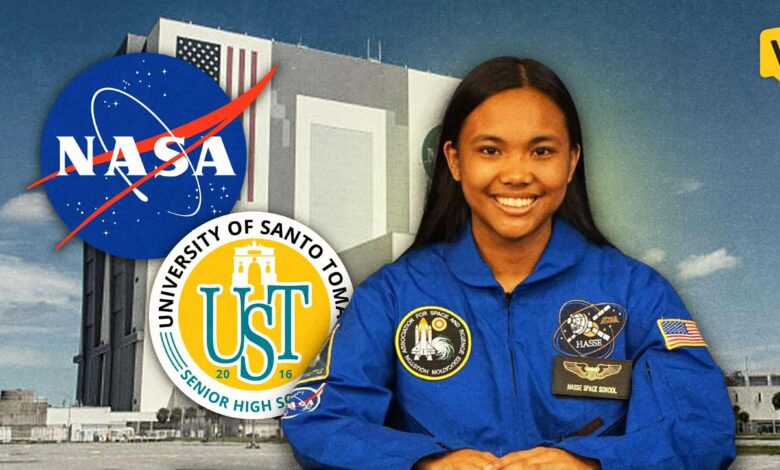
Filipino at NASA: From UST to Houston, Atasha Maggay’s Journey
Atasha Maggay has always been captivated by the cosmos. Her fascination with technology, which began in junior high, and her STEM-focused studies at UST Senior High School opened the door to a rare opportunity: training at NASA’s Lyndon B. Johnson Space Center in Houston, Texas.
In May 2025, Maggay was selected as one of only 15 students to join a 12-day intensive program on space science and technology. Her interest in the universe started in Grade 7, during her first coding class. By the time she finished high school, that curiosity had transformed into a passion that pushed her toward opportunities she once only imagined.
“I realized that technology is not just for exploring space but also for solving real-world problems here on Earth, and with that, I realized that with science and technology, we can really make a real difference,” she told the Varsitarian, proud to be a Filipino at NASA.
Balancing Academics and Athletics with Space Training
Preparing for the program was no small feat. Maggay managed online seminars and technical briefings from Data Science and Technology Corp., her final high school exams, and basketball training for the Thomasian Goodwill Games.
“Before we flew out of the country, I did a lot of juggling and balancing. What I had in mind then was to be present in the now and to finish and complete the tasks needed to be accomplished,” she said, reflecting her dedication as a Filipino at NASA.
During her first day at NASA, she marveled at the spacecraft and research labs, selecting topics she had long dreamed of studying. The program included lessons on aeronautics, robotics, space biology, engineering, and astronautics.
Hands-On Experience in Space Science
By the fourth day, Maggay and her team were launching and analyzing their own handmade rockets. She also faced engineering challenges, from programming autonomous robots to navigate Martian-like landscapes to constructing heat shields that could survive extreme temperatures.
Participants trained in simulated microgravity using underwater exercises and even dissected a shark to understand how life adapts to harsh conditions. The program concluded with a simulated mission to the Moon and Mars, where she and her team handled critical astronaut roles and problem-solving tasks in real time.
READ: 2 PH teams selected for NASA’s Space Apps Global Challenge
Recognition and Future Goals
Maggay’s hard work earned her top honors: a silver medal at NASA Space Center University, first place in the Martian Habitat Challenge and the Robotics and Cryogenic Challenge, second place in the Lunar Habitat Challenge at the University of Houston, and third place in the Coding Challenge.
“I feel proud to represent our country on the global stage, but more than that, I feel honored. This experience reminded me that nothing worth having comes easy, and that with perseverance, anything is possible,” she said, proud to be a Filipino at NASA.
Now a freshman in legal management at UST’s Faculty of Arts and Letters, Maggay hopes her experience will inspire other STEM students to explore space science.
“We have so many passionate and talented students. All we need is more support, resources, and opportunities for us to grow even more,” she said.
“I think we can strengthen this by investing more in STEM education and creating more programs in partnership with international space organizations.”
The NASA Houston Association for Space and Science Education (HASSE) Space School Program took place from May 17 to 28, 2025.
